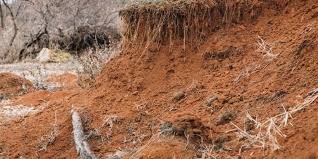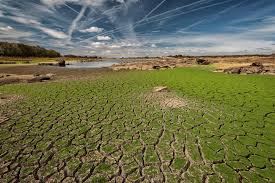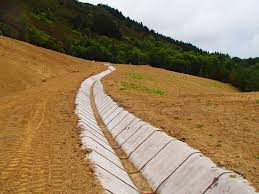Land degradation refers to the decline in the land’s productive capacity due to various factors, leading to diminished ecosystem services and agricultural output.
Soil erosion, a key aspect of land degradation, is the removal of the top layer of soil due to wind, water, or human activities. Understanding the causes and impacts of land degradation and soil erosion is essential for developing effective management strategies.
Causes of Land Degradation
1. Deforestation: The removal of trees for agriculture, urban development, or logging leads to loss of vegetation cover, resulting in soil degradation and increased vulnerability to erosion.
2. Unsustainable Agricultural Practices: Practices such as monoculture, overgrazing, and excessive use of chemical fertilizers and pesticides degrade soil quality and reduce fertility.
3. Urbanization: Expanding cities lead to land conversion for infrastructure and housing, disrupting natural ecosystems and causing soil compaction.
4. Mining Activities: Mining can strip land of vegetation and soil, leading to severe erosion and loss of arable land.
5. Climate Change: Changes in climate patterns can exacerbate droughts and floods, leading to soil degradation and increased erosion.
Causes of Soil Erosion

1. Water Runoff: Heavy rainfall can cause water to flow over the land’s surface, carrying away soil particles and leading to erosion.
2. Wind: Strong winds can lift and transport loose soil particles, particularly in arid regions where vegetation is sparse.
3. Poor Land Management: Inadequate land management practices, such as lack of crop rotation, failure to maintain ground cover, and improper tillage, contribute to increased soil erosion.
4. Cultivation on Slopes: Farming on steep slopes without proper erosion control measures can lead to significant soil loss due to gravity.
5. Overgrazing: Livestock can overconsume vegetation, reducing soil cover and making it more susceptible to erosion.
Impacts of Land Degradation on Ecosystems
1. Loss of Biodiversity: Degraded land can no longer support diverse plant and animal life, leading to species extinction and reduced ecosystem resilience.
2. Reduced Soil Fertility: Land degradation diminishes soil nutrients, impacting plant growth and reducing agricultural productivity.
3. Water Quality Decline: Erosion can lead to sedimentation in waterways, affecting water quality and aquatic habitats.
4. Disruption of Carbon Sequestration: Degraded lands are less effective at capturing and storing carbon, contributing to increased greenhouse gas emissions.
5. Altered Water Cycles: Land degradation affects natural water cycles, leading to changes in rainfall patterns and increased flooding or drought.
Read Also: Scrapie in Sheep and Goats: Description, Damages Caused, Control and Preventive Measures
Impacts of Soil Erosion on Agriculture

1. Decreased Crop Yields: Soil erosion removes nutrient-rich topsoil, reducing agricultural productivity and crop yields.
2. Increased Input Costs: Farmers may need to invest more in fertilizers and soil amendments to compensate for lost soil fertility, leading to higher production costs.
3. Loss of Arable Land: Continuous erosion can render land unsuitable for farming, leading to a loss of viable agricultural land over time.
4. Reduced Soil Structure: Erosion can lead to compaction and degradation of soil structure, making it more difficult for crops to establish roots and access water.
5. Economic Consequences: Reduced agricultural productivity due to soil erosion can lead to economic instability for farming communities and impact food security on a larger scale.
Link Between Land Degradation and Soil Erosion
Land degradation and soil erosion are closely interconnected phenomena. Land degradation refers to the deterioration of land quality and productivity, while soil erosion involves the removal of the topsoil layer, which is vital for plant growth. The following points illustrate this link:
1. Soil Loss Contributes to Land Degradation: As soil erosion removes nutrient-rich topsoil, the overall health of the land declines, leading to reduced agricultural productivity and ecosystem functions.
2. Vegetation Loss Accelerates Erosion: When land becomes degraded, vegetation cover decreases, which exposes soil to the elements and accelerates erosion processes.
3. Reduced Soil Fertility: The loss of topsoil through erosion diminishes soil fertility, making it challenging for plants to thrive and increasing the likelihood of land degradation.
4. Water Runoff and Soil Erosion: Degraded land is less able to absorb water, leading to increased surface runoff. This runoff can carry away soil particles, further exacerbating erosion and land degradation.
5. Cumulative Effects: The ongoing cycle of land degradation and soil erosion can lead to irreversible damage, making restoration efforts more challenging and costly over time.
Prevention and Management of Land Degradation
Preventing and managing land degradation is crucial for maintaining ecosystem health and agricultural productivity. Effective strategies include:
1. Sustainable Agricultural Practices: Implementing crop rotation, cover cropping, and agroforestry can enhance soil health and prevent degradation.
2. Soil Conservation Techniques: Employing techniques such as contour plowing, terracing, and building check dams can reduce erosion and conserve soil.
3. Reforestation and Afforestation: Planting trees and restoring native vegetation can stabilize soils, reduce runoff, and enhance biodiversity.
4. Education and Awareness Programs: Educating farmers and landowners about sustainable practices can promote responsible land management and conservation efforts.
5. Policy and Regulation: Implementing and enforcing land-use policies that prioritize sustainability can help mitigate land degradation on a larger scale.
Read Also: Management of Breeding Stock in Sheep and Goats
Methods to Control Soil Erosion

Controlling soil erosion is essential for protecting land and maintaining agricultural productivity. Here are effective methods to consider:
1. Vegetative Cover: Establishing grass, shrubs, or trees can protect soil surfaces and absorb water, reducing erosion caused by wind and water.
2. Mulching: Applying organic or inorganic mulch can protect soil from erosion, retain moisture, and improve soil health.
3. Physical Barriers: Building structures such as silt fences, straw bales, and gabions can help slow down water flow and trap soil particles.
4. Proper Tillage Practices: Reducing tillage intensity can minimize soil disturbance, thereby decreasing erosion risk and enhancing soil structure.
5. Water Management Techniques: Implementing effective drainage systems and constructing swales can help manage water flow and reduce soil erosion.
The Role of Sustainable Practices in Land and Soil Conservation
Sustainable practices play a vital role in conserving land and soil, ensuring long-term productivity and environmental health. Key aspects include:
1. Agroecological Approaches: Incorporating biodiversity and ecological principles in farming can enhance resilience against land degradation and erosion.
2. Integrated Pest Management (IPM): Using IPM reduces reliance on chemical inputs, promoting soil health and minimizing environmental impacts.
3. Organic Farming: Organic practices focus on building soil health through composting and natural fertilizers, contributing to soil conservation and degradation prevention.
4. Conservation Tillage: Implementing reduced tillage or no-till farming can help maintain soil structure and prevent erosion while promoting carbon sequestration.
5. Community Engagement: Involving local communities in land management decisions fosters stewardship and promotes sustainable practices that benefit both people and the environment.
By understanding the relationship between land degradation and soil erosion, and by implementing effective prevention and management strategies, it is possible to preserve land quality and promote sustainable agricultural practices for future generations.
Do you have any questions, suggestions, or contributions? If so, please feel free to use the comment box below to share your thoughts. We also encourage you to kindly share this information with others who might benefit from it. Since we can’t reach everyone at once, we truly appreciate your help in spreading the word. Thank you so much for your support and for sharing!
Read Also How to Make an Avocado Tree Bear Fruit
Frequently Asked Questions
We will update this section soon.
